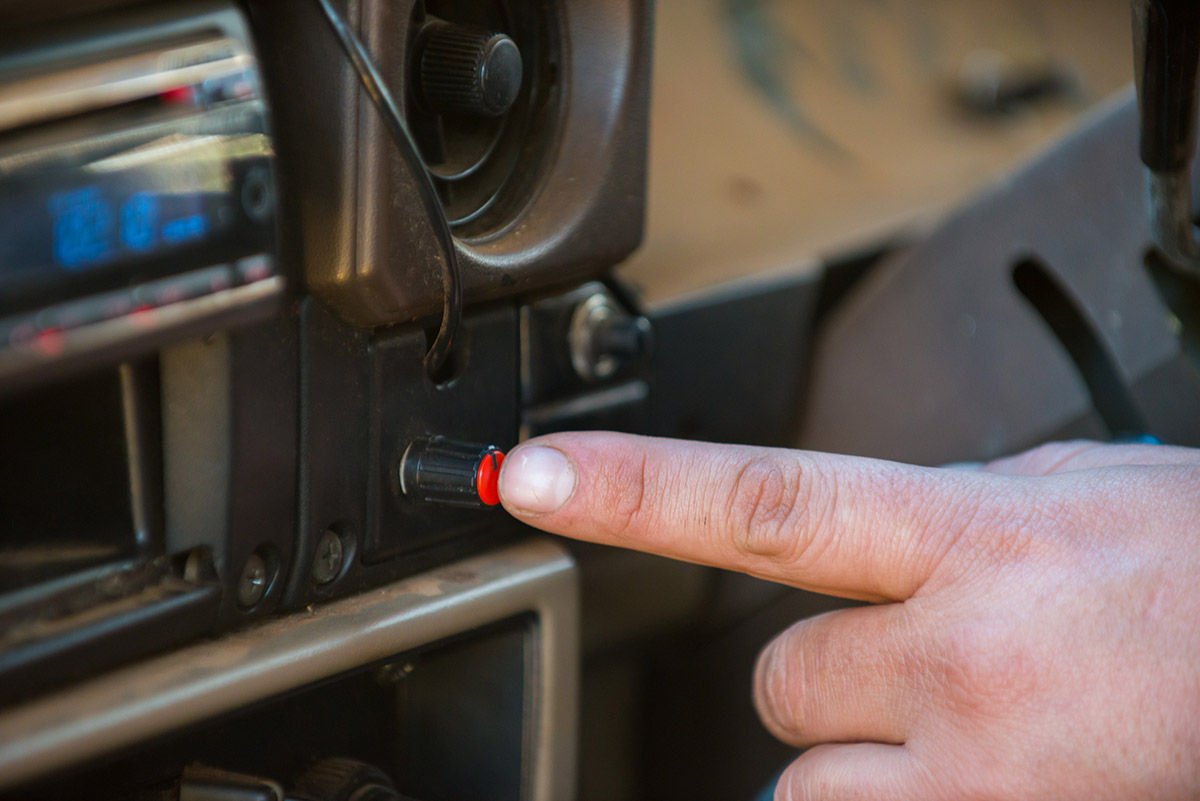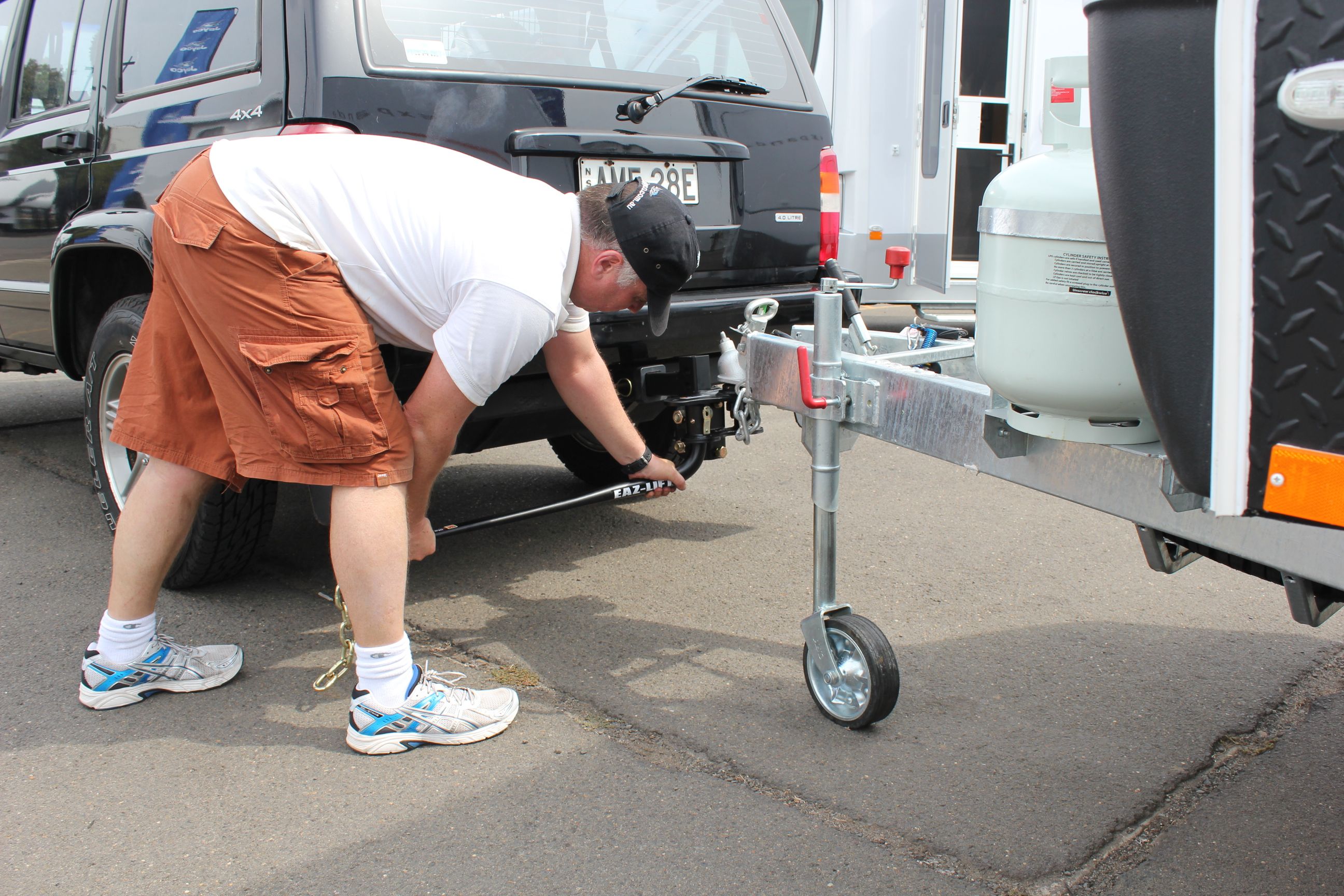1. ELECTRONIC STABILITY CONTROL

When AL-KO released its Electronic Stability Control (ESC) system for caravans in Australia in 2012, it signalled the single biggest safety improvement in the caravan industry’s history.
In five short years, AL-KO ESC has become the gold-standard safety feature for caravans, with about 50 per cent of new caravans rolling off production lines fitted with ESC as standard and most other manufacturers making it available as an option for around $1000. It can also now be retrofitted to existing vans for around $1500, meaning no caravanners have to go without.
AL-KO ESC is designed to provide the best possible response to caravan sway in critical towing situations. It brakes all wheels on the caravan simultaneously as soon as a dangerous sideways movement is detected by the lateral acceleration sensors inside the unit. It continuously evaluates the data and when critical lateral movements are recognised, ESC activates and applies the electric brakes immediately to bring the vehicle back into line in a smooth and controlled manner.
Until recently, AL-KO ESC was only available for electric drum braked caravans, but is now also available for those with hydraulic brakes.
2. ELECTRIC BRAKE CONTROLLERS

All towed trailers over 750kg require brakes, and those over 1500kg must also be able to be controlled from inside the tow vehicle via an electric brake controller. This legally-required safety measure usually involves a controller, which can be manually adjusted to apply the correct amount of braking force for any situation or van, mounted within easy reach of the driver’s seat. Common brands include Redarc, Hayman Reese, AL-KO, and Tekonsha.
Some units also allow drivers to ‘boost’ the brake power in exceptional situations, such as during sway or long or steep descents. Brake controllers generally have a dial from 1-10, or a slide on some models. With it dialled up to 10 you’ll get maximum braking power as soon as you touch the brakes, or knocked back to 1 the trailer brakes may not even activate. They offer complete control over your trailer, allowing you to make it brake harder, or lighter depending on the situation, but if you knock it back to 2 for a certain situation then forget it’s dialled down, you may get yourself into trouble.
3. VEHICLE COMPATIBILITY

Properly matching your caravan or camper trailer to your tow vehicle – or vice versa – is imperative for safe towing. There are many legal requirements that must be followed – such as ensuring your RV’s aggregate trailer mass (ATM) is under your vehicle’s towing capacity, that your RV’s towball download is under your vehicle’s, or towball manufacturer’s, allowed capacity, and that your entire towing combination does not exceed the vehicle’s gross combination mass (GCM).
Sorting out all the figures can be confusing, especially as every vehicle’s capacity is different, and some have changing figures depending on what they’re towing.
We encountered this recently during AL-KO’s Toughest Tow Test when we discovered a 2620kg caravan being towed with a Mitsubishi Pajero. While the Paj has a towing capacity of 3000kg, this drops to 2500kg if the van’s ball weight exceeds 180kg which, in this case, it did, coming in at 210kg.
And while a vehicle might be physically able to tow a van or camper outside its capacity, safety is compromised, not to mention your insurance becoming void.
4. BUILD QUALITY

Build quality is possibly the most important safety feature you’ve got in any caravan or camper. It’s no good having all the safety features in the world if an axle is going to snap when you’re flying down the highway.
Unlike many manufacturing industries in Australia, the caravan and camper trailer building industry is largely self-regulated, however, the national industry body and most state industry bodies have quality assurance and compliance programs, although participation and membership is usually voluntary.
The national Caravan Industry Association of Australia runs the RV Manufacturing Accreditation Program (RVMAP), in which it audits members to ensure they consistently build and supply product that adheres to all relevant Australian Design Rules (ADRs), Regulations and Australian Standards (AS). Accredited manufacturers are given an RVMAP ‘key’ to display, to show buyers they meet these standard. However, participation in RVMAP is voluntary and the CIAA points out that it should not be taken as a guarantee of, or warranty for, product compliance or the financial strength of a particular manufacturer.
That makes judging the quality of a camper or caravan a difficult, and very personal, thing to asses. First-hand checks are always the best place to start, as well as reputation, and other buyer experiences.
5. JOCKEY WHEELS

Every caravan and camper trailer has one – how important can they really be? They’re usually pretty basic in design, can be bought for as little as $20 online, and many manufacturers provide only a basic one with a new van. But have a jockey wheel collapse or break when you’re trying to maneuver your van in a remote area on your own and you’ll realise how important they are!
Jockey wheels can come in different styles – removable, swing-away/swivel, hydraulic, ratchet or motorised, from a variety of manufacturers and suppliers such as AL-KO, Hayman Reese, ARK, and BOS.
Swivelling or swing-away jockey wheels are convenient, as you don’t have to remove or store them, however, care must be taken to ensure that they are suitable for your configuration. If not properly mounted or positioned, swivel jockey wheels can impede other items on a drawbar or can snag during travel. Swivel jockey wheels may also have a limited lifting capacity due to the mounting point, and can have more flex.
Removable jockey wheels get around the space limitations on your drawbar and can be larger. Because of this, with a removable jockey wheel you can usually lift a van higher.
Hydraulic jockey wheels, such as the Trail-A-Mate, often double as jacks and are less effort to operate than a regular jockey wheel.
Motorised or powered jockey wheels attach to a drawbar like a normal jockey wheel and have an external battery and controller for easy maneuvering of your van or camper.
Ratchet-style jockey wheels, such as AL-KO’s Power Mover, have a long ratchet arm that attaches for easier and safer movement of your RV.
MEET THE AUTHOR
Laura Gray
An RV journalist working across Australia’s premier caravanning and camping magazines for the past five years, Laura is also a judge at the annual Best Aussie Vans awards. She has been camping in the great outdoors since the of two, when she was packed, by day, into a Toyota LiteAce van and, by night, into a brown canvas tent with her parents and two siblings for an extended trip around the vast playground that is northern Western Australia.





